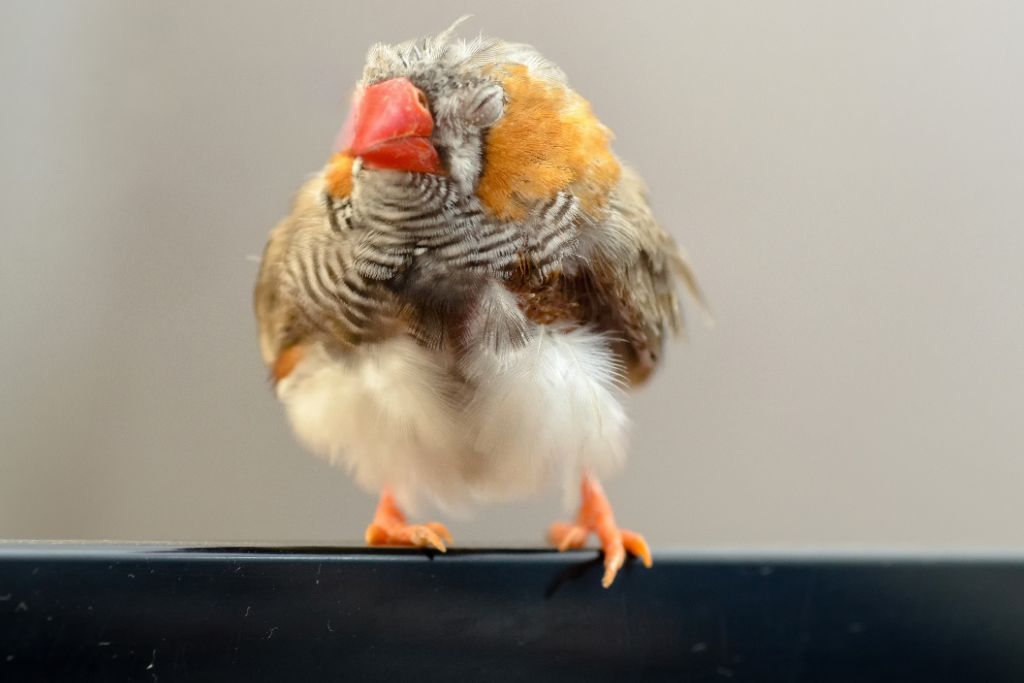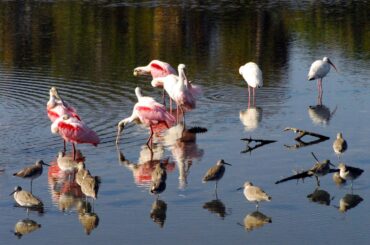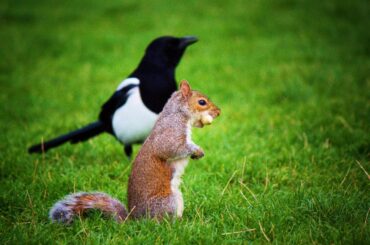Have you ever wondered if birds sleep? Bird sleep is unique and crucial for their survival, as some birds can sleep with one eye open to stay alert. In this article, we’ll journey into the intriguing world of avian slumber, debunking myths and revealing truths.
Have they ever seen a bird perched but still conscious? They can rest half their brain at a time, keeping one eye open for danger. It’s called unihemispheric slow-wave sleep.
Birds use various cozy spots for shut-eye, from nests to tree branches. Their sleep style is connected to survival, navigation, and conserving energy.
How Do Birds Sleep?
Birds have a unique approach to sleep. Some rest with one-half of their brain at a time, allowing them to stay aware of their surroundings even while dozing. This adaptation helps them balance the need for rest with staying alert for potential dangers.
Unihemispheric Sleep
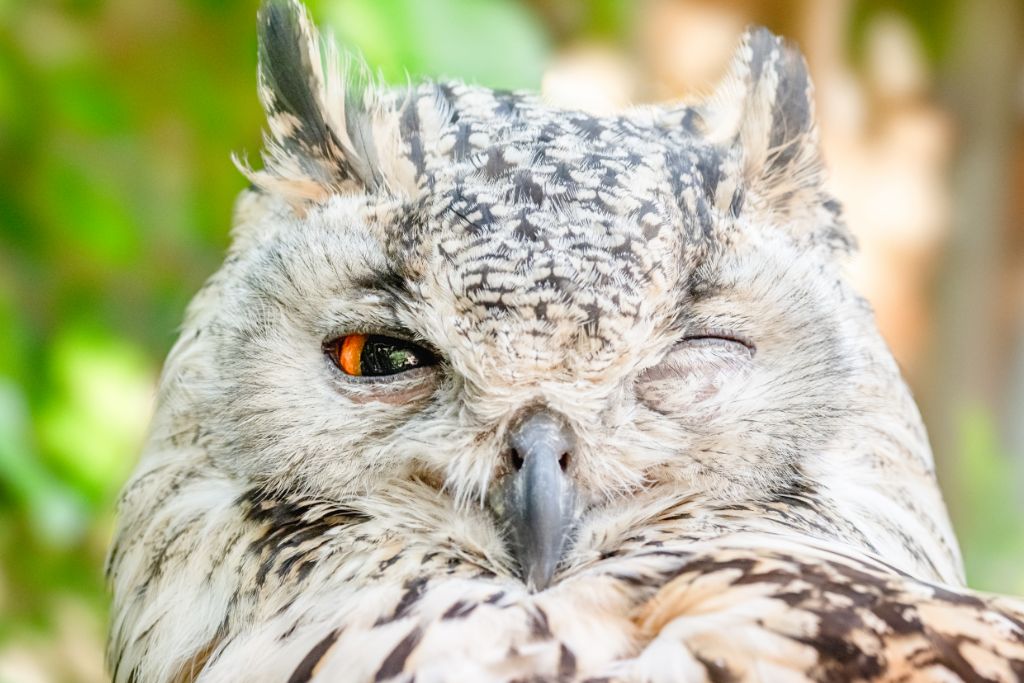
Unlike humans, some birds sleep with one eye open, a unique trait called unihemispheric sleep. This means while one side of the brain rests, the other stays alert. This nifty adaptation helps birds watch for danger while getting the needed rest. It’s a smart survival strategy that showcases the wonders of nature’s solutions!
Rapid Eye Movement (REM) Sleep
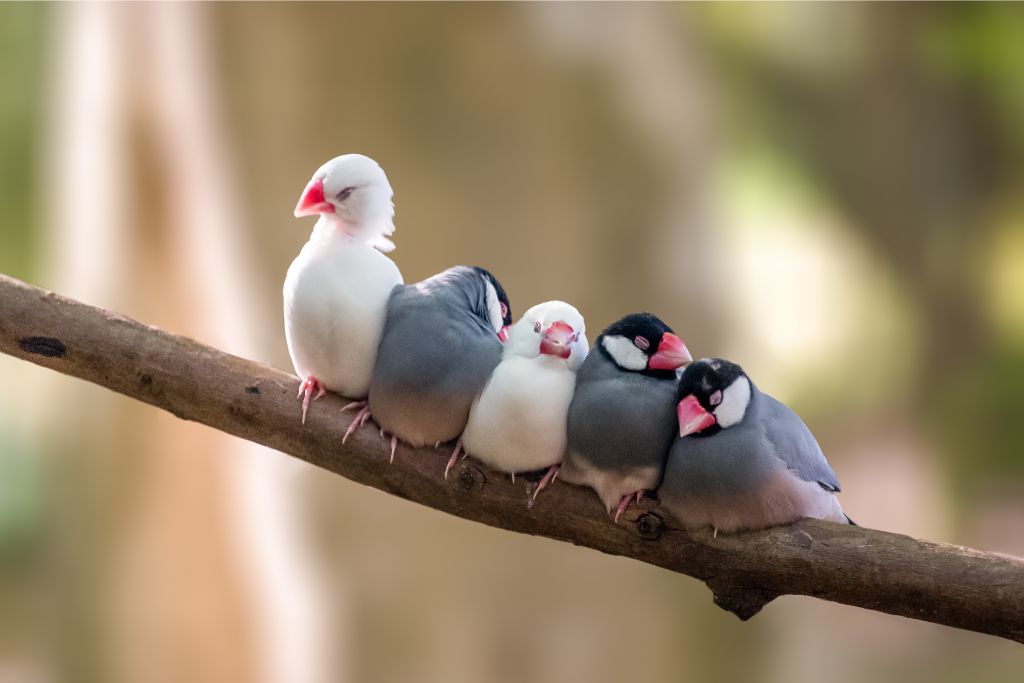
Birds experience REM sleep, similar to humans. During this phase, their brain becomes active, much like when awake. While unsure if they dream, REM sleep hints at their potential dreamy adventures. This shared sleep pattern uncovers a captivating connection between bird and human slumber.
Safety Concerns
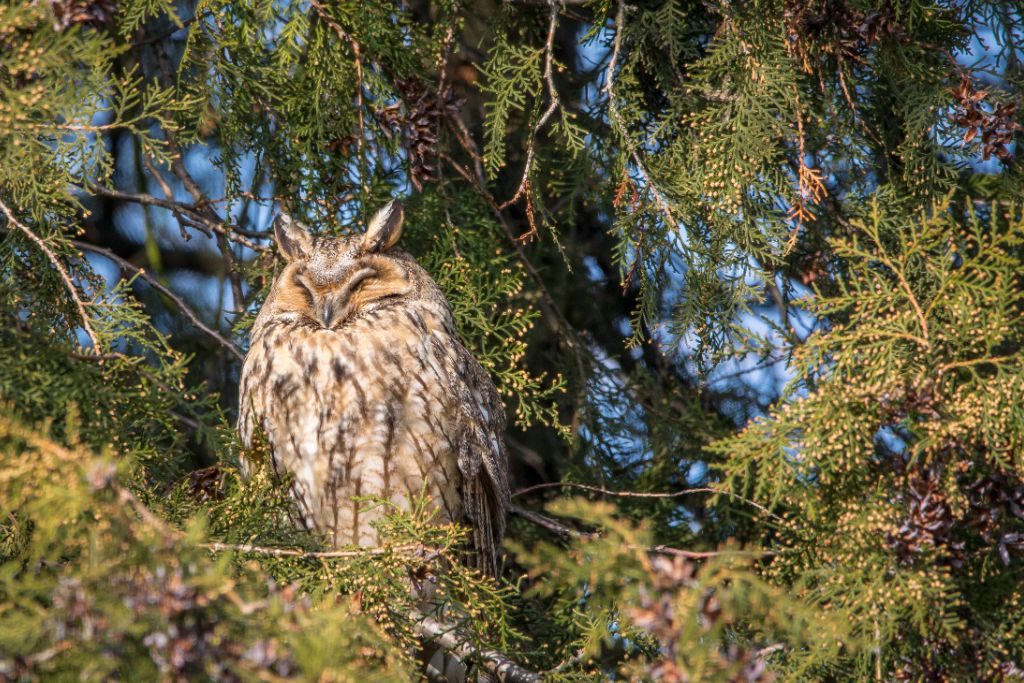
Birds prioritize safety, even during slumber. Their unique ability to stay partially awake helps them remain vigilant against predators. They choose secure spots and adapt their sleep style to minimize risks. This constant awareness showcases nature’s smart solutions for their protection, allowing them to rest while staying alert.
Where Do Birds Sleep at Night?
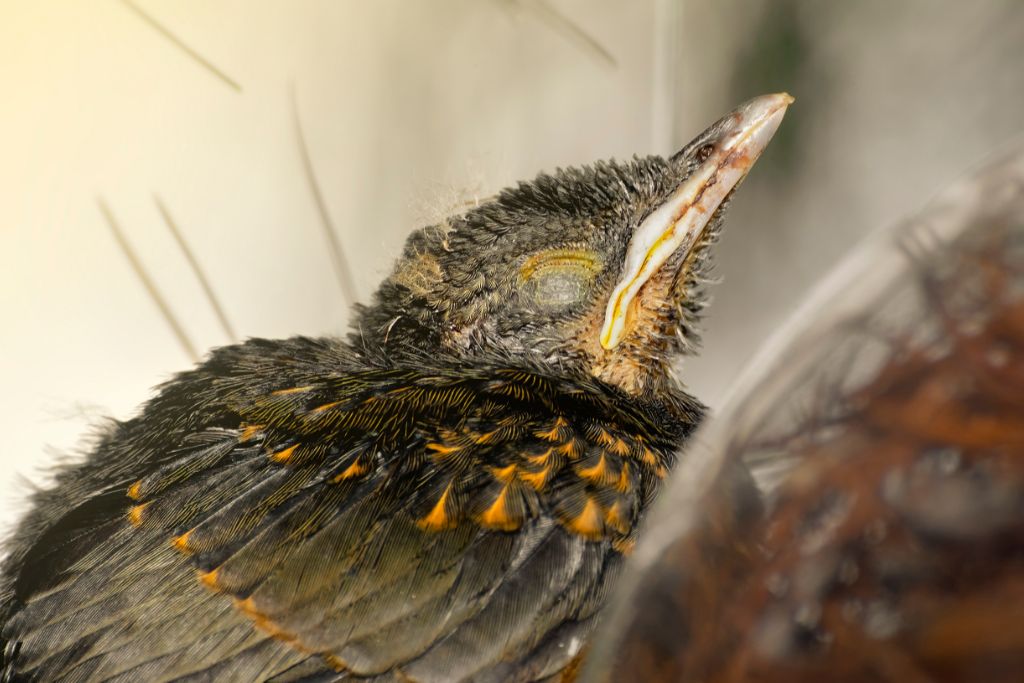
As daylight fades, birds find refuge in diverse spots. Nests, tree branches, and cozy hideouts, like hollows, provide secure resting havens. This journey into avian sleep unveils the fascinating array of nocturnal shelters.
- Nests: Birds often retreat to their nests for a snug night’s sleep, sheltered from weather and predators.
- Tree Branches: Many birds perch on sturdy branches, using their feet to grip and snooze safely above the ground.
- Crevices and Caves: Some birds seek refuge in natural hideouts, like rock crevices or tree hollows, shielded from harm.
- Reeds and Marshes: Water-loving birds are camouflaged and secure in reed beds or marshy areas.
- Roosting Sites: Large flocks find safety in numbers, gathering on cliffs or rooftops, benefiting from collective vigilance.
How Long Do Birds Sleep?
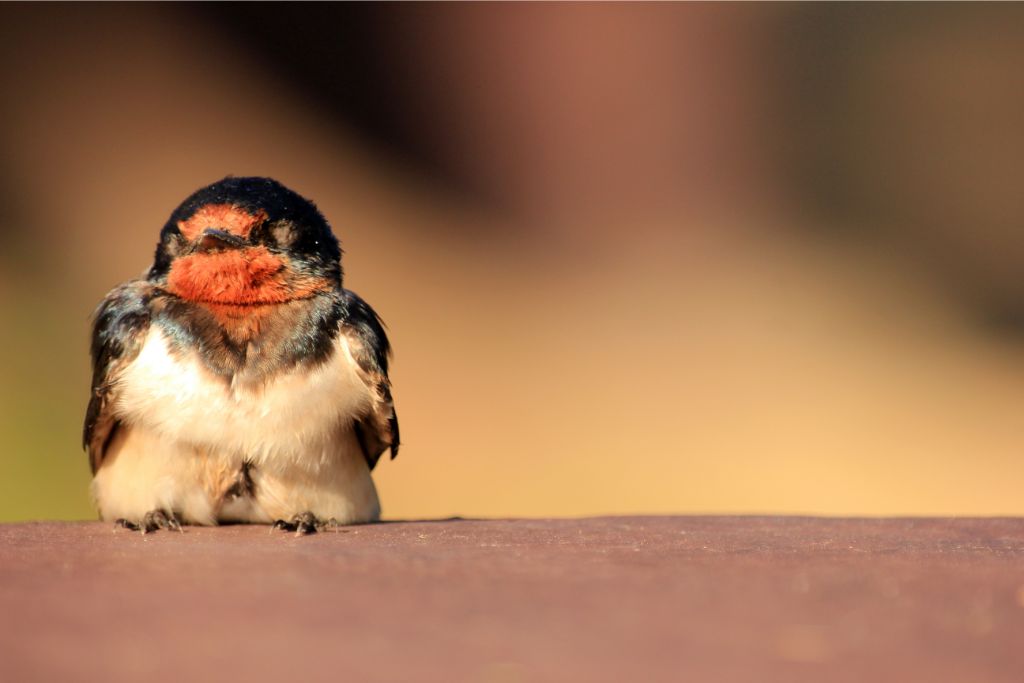
Birds’ sleep patterns vary widely. Some snooze just a few seconds at a time, while others rest for hours. Swift fliers, like swallows, might nap mid-air, while seabirds often sleep while floating on water. Larger birds, like eagles, need substantial rest.
Their sleep is linked to survival needs, energy conservation, and staying alert in their unique habitats. Observing these diverse sleep habits lets us appreciate how birds adapt to their environments.
Factors Influencing Sleep Duration in Birds
Birds’ sleep varies due to size, lifestyle, and environment. Smaller birds require less rest, while active hunters need more sleep for energy.
Habitats and climate shape sleep, too. Cold climates demand more rest for warmth, while warm zones mean shorter naps to avoid overheating. Discover how nature’s factors weave together for birds’ unique sleep schedules.
- Size Matters: Smaller birds may need less sleep, while larger species, like eagles, require more rest to recharge.
- Lifestyle Influences: Birds with active lifestyles, like hunters, need ample sleep to sustain their energy for hunting and survival.
- Environmental Impact: Habitat and weather conditions play a role. Birds in cold climates might need extra sleep to conserve energy. At the same time, those in warm regions may rest less to avoid overheating.
What Time Do Birds Sleep?
Birds follow diverse sleep schedules. Nocturnal species, like owls, are active at night, while diurnal birds, like robins, thrive during the day.
Factors like food availability and predators shape when birds sleep. Some choose to rest during safer daylight, while others use the cover of darkness.
Many birds showcase crepuscular behavior, being more active during dawn and dusk. These twilight hours balance light and dark, reducing the risks from predators while providing ample light to forage.
Birds like doves and thrushes take advantage of these transitional times, showing us the beauty of nature’s timing in their daily lives.
Sleep Adaptations in Birds
Birds have remarkable adaptations for diverse sleep environments. Some, like ducks, can sleep with one eye open while resting on water, a safeguard against predators.
Certain seabirds, like albatrosses, sleep while soaring over oceans. Their brains take turns resting, allowing them to stay airborne during long journeys. It’s vital for their navigation, memory, and health.
During sleep, birds consolidate memories and process experiences, aiding in learning and survival strategies.
Sleep is crucial for migratory birds’ navigation and orientation during their journeys. Sleep contributes to birds’ abilities and overall wellness.
Threats and Challenges to Avian Sleep
Human activities, like bright city lights and habitat destruction, disrupt birds’ sleep patterns. These disturbances can affect their internal clocks and overall health. Changing climates may also alter sleep behavior, potentially harming their survival and migration patterns.
- Light Pollution: Excessive artificial light confuses birds’ internal clocks, affecting their sleep-wake patterns.
- Habitat Destruction: Urbanization destroys natural habitats, forcing birds into unfamiliar, noisy surroundings that disrupt sleep.
- Climate Change Impact: Altered weather patterns and shifting habitats can disturb birds’ sleep cycles, affecting their breeding and migration.
Final Thoughts
As we unveil the marvels of bird sleep, let’s remember to honor their natural habitats. By reducing light pollution and preserving ecosystems, we can ensure that birds maintain their vital sleep patterns. Observing their unique sleep behaviors reminds us of the beauty and balance of nature, a legacy we should treasure and safeguard for generations to come.
FAQs
How Long Do Birds Sleep?
Birds’ sleep duration varies widely. Some sleep for just a few seconds, while others rest for hours, depending on factors like size, lifestyle, and environment.
How Do You Know if a Bird is Sleeping?
When birds sleep, they often tuck their heads under their wings, close their eyes, and become less responsive to external stimuli.
Are Birds Scared at Night?
Birds can be more cautious at night due to reduced visibility and potential predators. They may choose secure spots and adjust their sleep behavior for safety.
Do Any Birds Sleep While Flying?
Yes, certain birds, like albatrosses, can sleep while flying. They rest one hemisphere of their brain at a time, enabling them to relax during long flights.
Do Birds Shut Their Eyes to Sleep?
Yes, most birds close their eyes when they sleep, though some, like eagles, might keep one eye open to stay vigilant.

